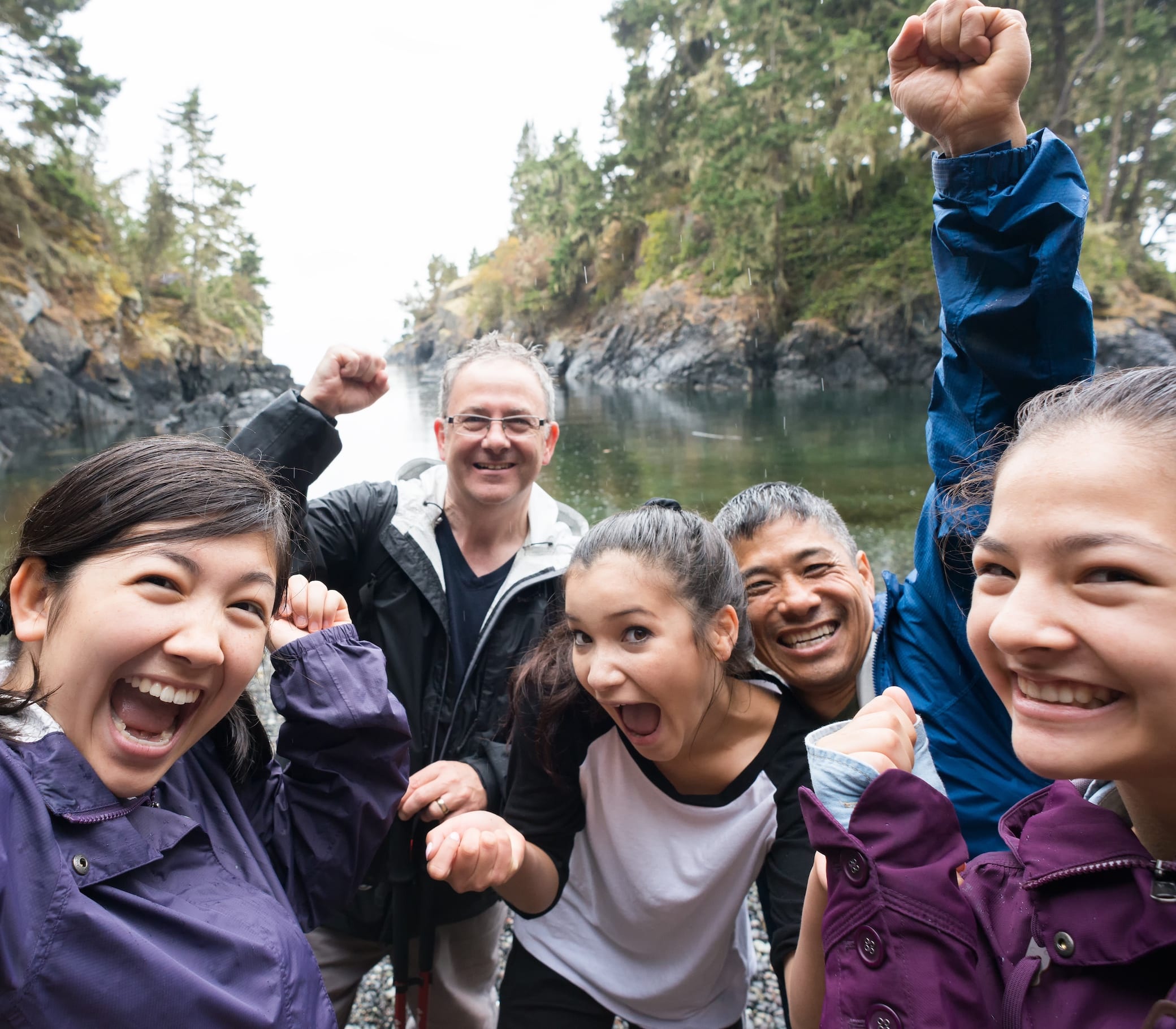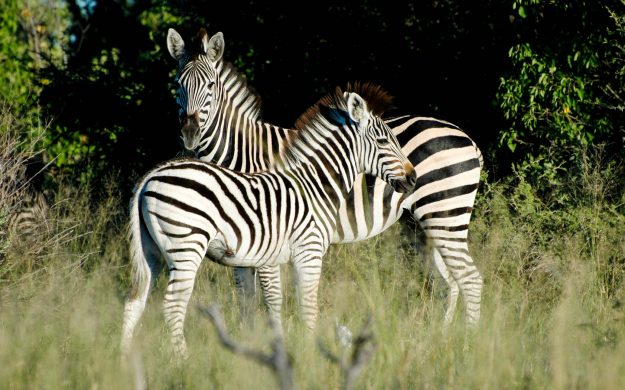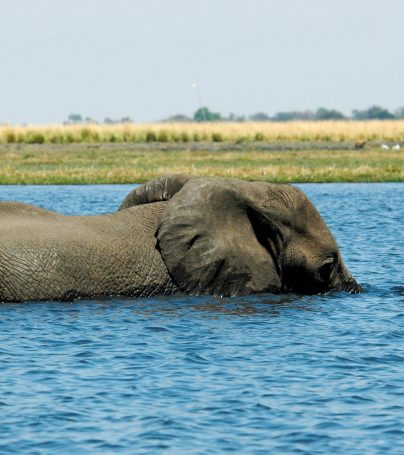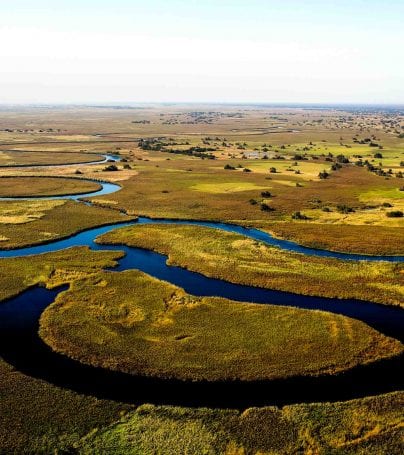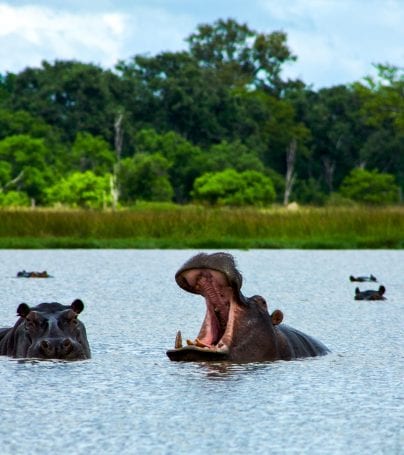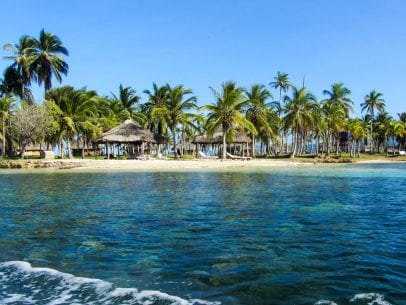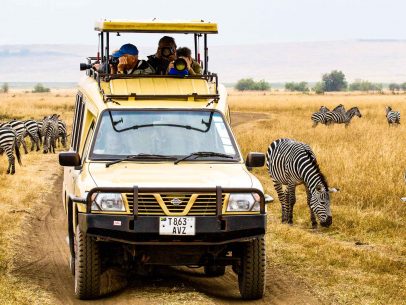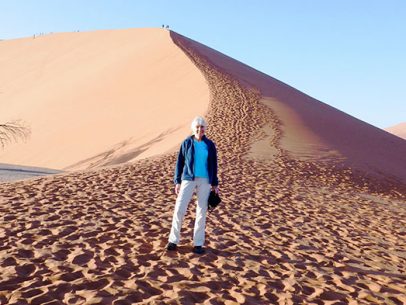Victoria Falls Adventure Tours
Africa’s Victoria Falls or Mosi-oa-Tunya (the smoke that thunders) are, by some measures, the largest waterfall on the planet, as well as being among the most unusual in form, and having arguably the most diverse and easily-seen wildlife of any major waterfall site. Although Victoria Falls constitute neither the highest nor the widest waterfall in the world, their claim to be the largest is based on a width of 1.7 km (1 mile) and height of 108 m (360 ft), forming the largest sheet of falling water in the world. The falls’ maximum flow rate compares well with that of other major waterfalls. The unusual form of Victoria Falls enables virtually the whole width of the falls to be viewed face-on, at the same level as the top, from as close as 60 m (200 ft), because the whole Zambezi River drops into a deep, narrow slot-like chasm, connected to a long series of gorges. Few other waterfalls allow such a close approach on foot. Many of Africa’s animals and birds can be seen in the immediate vicinity of Victoria Falls, and the continent’s range of river fish is also well represented in the Zambezi, enabling wildlife viewing and sport fishing to be combined with sightseeing.
Victoria Falls are one of Africa’s major tourist attractions and are a UNESCO World Heritage Site. The falls are shared between Zambia and Zimbabwe, and each country has a national park to protect them and a town serving as a tourism center: Mosi-oa-Tunya National Park and Livingstone in Zambia, and Victoria Falls National Park and the town of Victoria Falls in Zimbabwe.
The whole volume of the Zambezi River pours through the First Gorge’s 110 m (360 ft) wide exit for a distance of about 150 m (500 ft), then enters a zigzagging series of gorges designated by the order in which the river reaches them. Water entering the Second Gorge makes a sharp right turn and has carved out a deep pool there called the Boiling Pot. Reached via a steep footpath from the Zambian side, it is about 150 m (500 ft) across. Its surface is smooth at low water, but at high water is marked by enormous, slow swirls, and heavy boiling turbulence. Objects that are swept over the falls, including the occasional hippo or even human, are frequently found swirling about here or washed up at the north-east end of the Second Gorge. This is where the bodies of Mrs. Moss and Mr. Orchard, mutilated by crocodiles, were found in 1910 after two canoes were capsized by a hippo at Long Island above the falls.
The principal gorges are:
- First Gorge: the one the river falls into at Victoria Falls
- Second Gorge: (spanned by the Victoria Falls Bridge), 250 m south of falls, 2.15 km long (270 yd south, 2350 yd long)
- Third Gorge: 600 m south, 1.95 km long (650 yd south, 2100 yd long)
- Fourth Gorge: 1.15 km south, 2.25 km long (1256 yd south, 2460 yd long)
- Fifth Gorge: 2.55 km south, 3.2 km long (1.5 mi south, 2 mi long)
- Songwe Gorge: 5.3 km south, 3.3 km long, (3.3 mi south, 2 mi long) named after the small Songwe River coming from the north-east, and the deepest at 140 m (460 ft), at the end of the dry season.
- Batoka Gorge: the gorge below the Songwe is called the Batoka Gorge (which is also used as an umbrella name for all the gorges). It is about 120 km (75 mi) long (the straight line distance to its end is about 80 km (50 mi) east of the falls) and takes the river through the basalt plateau to the valley in which Lake Kariba now lies.
The walls of the gorges are nearly vertical and generally about 120 m (400 ft) high, but the level of the river in them varies by up to 20 metres (65 ft) between wet and dry seasons.
The recent geological history of Victoria Falls can be seen in the form of the gorges below the falls. The basalt plateau over which the Upper Zambezi flows has many large cracks filled with weaker sandstone. In the area of the current falls the largest cracks run roughly east to west (some run nearly north-east to south-west), with smaller north-south cracks connecting them.
Over at least 100,000 years, the falls have been receding upstream through the Batoka Gorges, eroding the sandstone-filled cracks to form the gorges. The river’s course in the current vicinity of the falls is north to south, so it opens up the large east-west cracks across its full width, then it cuts back through a short north-south crack to the next east-west one. The river has fallen in different eras into different chasms which now form a series of sharply zig-zagging gorges downstream from the falls.
Ignoring some dry sections, the Second to Fifth and the Songwe Gorges each represents a past site of the falls at a time when they fell into one long straight chasm as they do now. Their sizes indicate that we are not living in the age of the widest ever Mosi-oa-Tunya.
The falls has already started cutting back the next major gorge, at the dip in one side of the ‘Leaping Waters’ section of the falls. This is not actually a north-south crack, but a large east-north-east line of weakness across the river, and that is where the next full width falls will eventually form.
The two national parks at the falls are relatively small – Mosi-oa-Tunya National Park is 66 km2 and Victoria Falls National Park is 23 km2. However, next to the latter on the southern bank is the Zambezi National Park, extending 40 km west along the river. Animals can move between the two Zimbabwean parks and can also reach Matetsi Safari Area, Kazuma Pan and Hwange National Park to the south.
On the Zambian side, fences and the outskirts of Livingstone tend to confine most animals to the Mosi-oa-Tunya National Park. Fences put up by lodges in response to crime also restrict animal movement.
Mopane woodland savannah predominates in the area, with smaller areas of Miombo and Rhodesian Teak woodland and scrubland savannah. Riverine forest with palm trees lines the banks and islands above the falls. The most notable aspect of the area’s vegetation though is the rainforest nurtured by the spray from the falls, containing plants rare for the area such as pod mahogany, ebony, ivory palm, wild date palm and a number of creepers and lianas. Vegetation has suffered in recent droughts, and so have the animals that depend on it, particularly antelope.
The national parks contain abundant wildlife including sizable populations of elephant, buffalo, giraffe, zebra, and a variety of antelope. Lion and leopard are only occasionally seen. Vervet monkeys and baboons are common. The river above the falls contains large populations of hippopotamus and crocodile. Elephants cross the river in the dry season at particular crossing points.
Klipspringers and clawless otters can be glimpsed in the gorges, but they are mainly known for 35 species of raptors. The taita falcon, the black eagle, the peregrine falcon, and the augur buzzard breed there. Above the falls, herons, fish eagles, and numerous kinds of waterfowl are common.
Customize Your Dream Adventure
We are here to help craft tailor-made adventures for individuals, couples, families, and groups of explorers.
